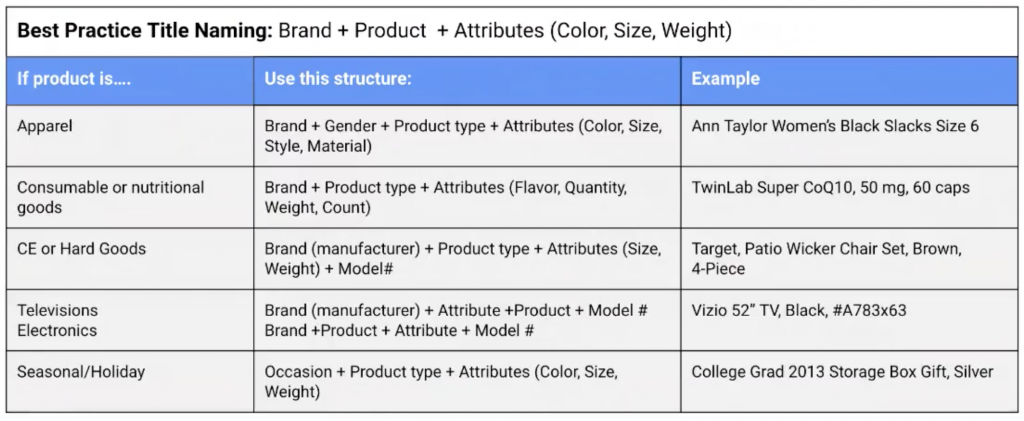How to Avoid Errors in Google Ads Shopping
So, you’ve prepared your Shopping feed, set up your campaign structure, written your descriptions, allocated your budget and double checked everything. However, after clicking ‘Enable’, you start receiving notifications about product feed errors and disapprovals - what’s gone wrong?
It could be a number of things, so to ensure you don’t miss out on sales, you should utilise Google’s Shopping best practice as a checklist. In the following article, we highlight some of the most important best practice and a few quick tips to solve the most common mistakes made on accounts.
Best Practice for your Shopping Ads
Following Google best practice helps you ensure you have taken all the necessary steps to give yourself the best possible chance to be shown in relevant shopping results, along with having the best possible quality score. Best practice should also involve aspects such as account structure which, although not necessarily affecting the quality score in every instance, will help to keep your account clean and easy to use.
Ensure You Have the Best Quality Content
As technology continues to develop, consumers become pickier and want to make ever more informed decisions for even more of their online purchases. Creating a good quality advertising experience is, therefore, more important than ever if your business is to compete and attract their attention.
Images
Keep your product images at or above 800x800 pixels so that your image scales correctly on all devices. If you have chosen to have your image at a lower ratio, you risk your image being heavily pixelated because of the screen sharpness on modern day devices.
Research shows that having high-quality images can increase clickthrough rate and help towards gaining all-important leads/conversions. So, remember to ensure your image is always of a good quality!
Titles and Copy
 Another important aspect of your ad is your product title. This is one of the first things a potential customer is going to see. Therefore, you need to make a good first impression.
Another important aspect of your ad is your product title. This is one of the first things a potential customer is going to see. Therefore, you need to make a good first impression.
To do so, Google recommends a certain structure to your product titles. The general principle is to put the most important information first and always include terms which are going to be relevant and useful to the customer in the copy.
The image above shows how you should best title your products. Of course, there are circumstances when this structure won’t be possible. But sticking to these recommendations as much as possible should have a positive impact on your ads.
As well as having the most relevant title as possible, you should also try and stick to the following tips:
- Avoid special characters and capitalisations
- Always try to mirror content found on your landing page and site
- Use terms that most of your audience will use to search for your products
Product Types
Product types give extra information to help Google understand what your products are and so show them for relevant queries. Remember your ‘Product Type’ is your own categorisation; not to be confused with ‘Google Product Category’ which uses ‘Google’s own’ categorisation rules and is required for feeds which target the US, UK, Germany, France and Japan.
Using product types can help to structure your account through a detailed hierarchy which can be then used to segment and optimise your campaigns. For example, if you’re selling MacBook’s you might want to categorise it as: Electronics > Computing > Laptops > MacBook’s.
Shopping Ads and Feed Issues
With the recent introduction of bots to shopping ad feeds which will now view your product and automatically populate the price. You can now save huge amounts of time from manually applying updates to product prices. However, although this new update is brilliant for any product orientated account; there can be increased issues due to the numbers not always corresponding i.e. if a website regularly changes the prices of the product.
When your information doesn’t correspond with what Google has already collected, you may find your ads being disapproved and not showing at all.
Product Images
Your product images are a huge part of whether or not a potential customer is going to ‘buy’ or look somewhere else. Therefore, ensuring you get this aspect of the ad perfect, is a huge priority.
Google has some strict rules regarding product images, meaning that promotional text and obstructing elements such as watermarks will all lead to disapproval. However, good news! Google updated their disapproval process on 19th September 2018 to only disable the image in question and not all other ads with the same image.

Sale Price Updates
Sale prices can be tricky on Google Shopping. This is because you will often need to update your feed twice, at the beginning of the sale and at the end to return to normal pricing. If you don’t do this, you will find your ads being disapproved due to mismatched prices in your feed and onsite.
However, there is a way to get around this and save time in the process. Use the ‘sale_price_effective_date’ attribute in your feed. This means you can specify how long your sale will run to ensure your ads don’t get disapproved once the sale is over. This attribute can then be used in conjunction with the ‘sale price’ attribute to create a fully automated sale campaign!
It is important to remember start and end times with this attribute as if you don’t the updated price will start at 12 am (midnight) and end at 11:59 pm on the end date (based on the time zone of your account).
Availability Issues
Availability issues can occur when the stock information on your landing page is different from that of your feed. For example, a product is available for pre-order on your site but is set as 'in stock' in your feed. In some cases, it can also be due to Google being unable to verify the information on your site.
The use of the structured data markup on your product pages can help Google to easily locate relevant, up-to-date information via specific code that is added onto your page. Using the schema.org structure, you can specify lots of different attributes, including [availability] to highlight whether a product is ‘in_stock’, ’out_of_stock’ or a ‘preorder’.
Another option for solving availability issues is through a feature called the ‘Product Inventory Update Feed’ which aims to automate this process. This option is very useful for large e-commerce companies that need to update their stock and inventory on a regular basis. Through implementing this feature, you can deliver the latest information, save time and reduce the chance of your product ads not being approved.
This feature is also relevant to ‘Sale Price Updates’ as it can be used in a very similar way to ‘sale_price_effective_date’ solution. But if you would like to learn more about this you can always view the Google Merchant Centre Help support website.
Shipping and Tax
A few things to note around this topic. Google requires you to provide information about shipping and tax costs when creating a feed for your Shopping ads, so you will need that data too.
When targeting B2B companies it’s important to always submit the highest price someone could pay for your services or product (the gross price must be more prominent than the net price on the site). Further to this, when targeting the US, it's also important to never include VAT as this is required for you to override the account tax setting that you've set up in the merchant centre.
Take The Time to Do Things Right
If you would prefer to manage your Google Shopping feed yourself, that's fine! We have designed this piece as an outline guide to give you a broad brush summary of the actions to take with your shopping feed. For a more detailed guide why not check out our article 'Advanced Google Shopping Optimisation:Tips and Techniques'?
On the other hand, we understand that the amount of things to think about and implement may be overwhelming, especially to a busy Ecommerce Manager. This is when experienced digital advertising professionals are their most helpful. Working with an experienced agency, you can avoid the stress and hassle of developing these complex solutions and work on the parts of your business which are most important to you.
If you would like some expert advice and or help on your account, our team has a wealth of experience and would be happy to help. Contact us today to talk to an expert.








